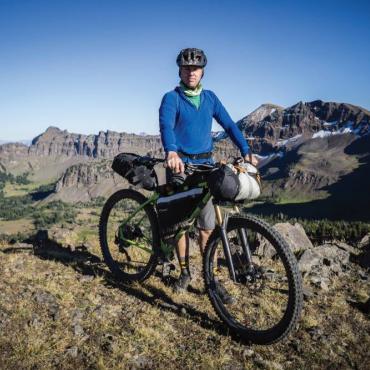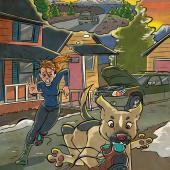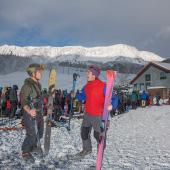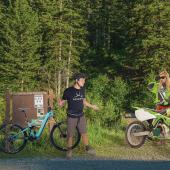Face-Off: Bridgers vs. Gallatins
Bozeman's best hometown range.
These two mountain playgrounds are home to some of our favorite places in the world. But when it comes down to it, which one really stands on top? Read on as we attempt to settle an argument even Lewis and Clark couldn’t have agreed on—Bridger or Gallatin?
Access
The Bridgers are Bozeman’s backdrop—as familiar to us as the sun and the moon. But just because they’re easy to see doesn’t mean they’re easy to approach—surrounded by private land, and with a limited number of access points on both sides of the Bridger Range, sometimes playing there can be cumbersome. The Gallatin offers just as many nearby trailheads to the south and even more beyond, and with vast improvements to parking and year-round road maintenance, getting there has never been easier. Ultimately, the Gallatin Range has better access—meaning more adventure.
Edge: Gallatin
Scenery
Look out your north- or east-facing window—what do you see? If you’re in Bozeman, chances are you see the long spine of the Bridgers, keeping us company and towering over us as though protecting our little city. While the depth and diversity of the Gallatin Range offer soaring mountain peaks, virgin basins, and 80-foot waterfalls, the Bridgers, with their unwavering loyalty, give us a constant visual reminder of how great it is to live here.
Edge: Bridgers
Recreation
While the Bridgers host our hometown ski hill and a collection of nearby trails, the Gallatin has Hyalite, the biggest playground around, featuring endless trails, waterfalls, and summits. Stalking an animal, rolling down singletrack, canoeing alpine lakes—we’re giddy just thinking about it. There’s a lifetime of adventure waiting just beyond the Gallatin’s gravel roads—certainly more than a single ridgeline could ever match.
Edge: Gallatin
Proximity
This is a big one. One of the things that makes Bozeman great is our location, nestled snugly into the Bridgers and surrounded by splendor. Both ranges host a handful of nearby trailheads, but more often than not, the Bridgers beckon us when it’s time for an afternoon hike or an evening bike ride to cap off the day. This was a tough call, and obviously we’re spoiled; but sometimes the Gallatin just feels a little too distant.
Edge: Bridgers
History
Lewis and Clark, Sacagawea, Jim Bridger, John Bozeman—this area has seen plenty of legends. Envisioning an expedition along the Gallatin River and tromping through the untouched valley before being led over Bozeman Pass—it’s all so interconnected that it’s hard to choose one over the other. But the Bridgers’ highest peak was named after the great female Blackfoot guide to the Lewis and Clark expedition, and the Bridgers themselves took their name from legendary mountain man Jim Bridger, famous for exploring the West on foot and spinning yarns about geysers and Indians. Taking your name from a guy in a suit—Albert Gallatin, Secretary of the Treasury—is just sort of lame.
Edge: Bridgers
Camping
While it’s definitely possible to doze off in the Bridgers, we don’t often find ourselves doing it; there are only two campgrounds and one Forest Service cabin in the range. With almost ten cabins scattered throughout and over 15 designated campgrounds, the Gallatin has the ability to please more sleepers in more places. No matter what your style of slumber, there’s always something to satisfy you south of the city.
Edge: Gallatin
Variety
The Bridger Mountains are strikingly diverse from north to south. From forested foothills to dramatic rocky peaks, there’s plenty to see at this local stomping ground. Despite all that, you can be pretty certain of what you’ll find at any given location in the Bridgers. Compare that to the vastness and grandeur of the Gallatin Range, with endless alpine lakes, trails that take you anywhere you want to go, and diverse forests and streams—the great Gallatins are everlasting.
Edge: Gallatin
Score: 4 to 3
Winner: Gallatin Range
They both hold a special place in our hearts, and this battle certainly hit close to home. But when the last trail has been hiked and the final mountain climbed, we can see that one range stands taller than the other.














